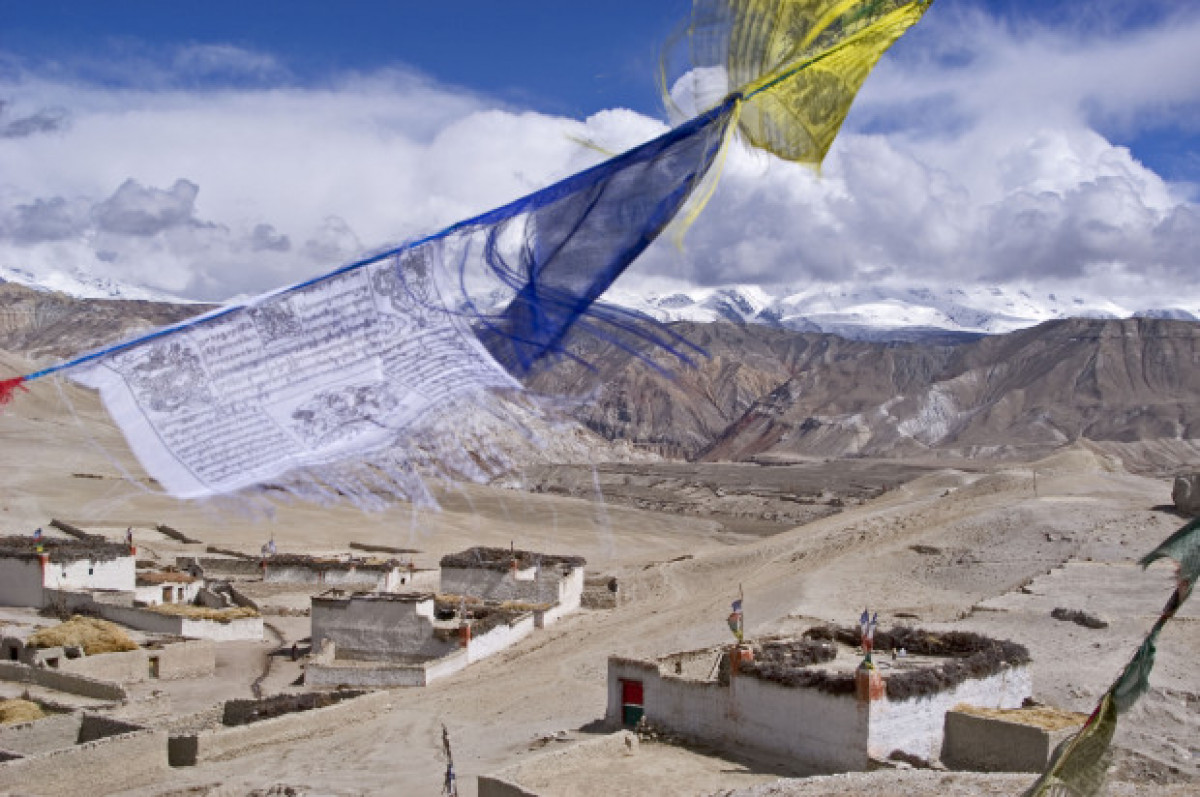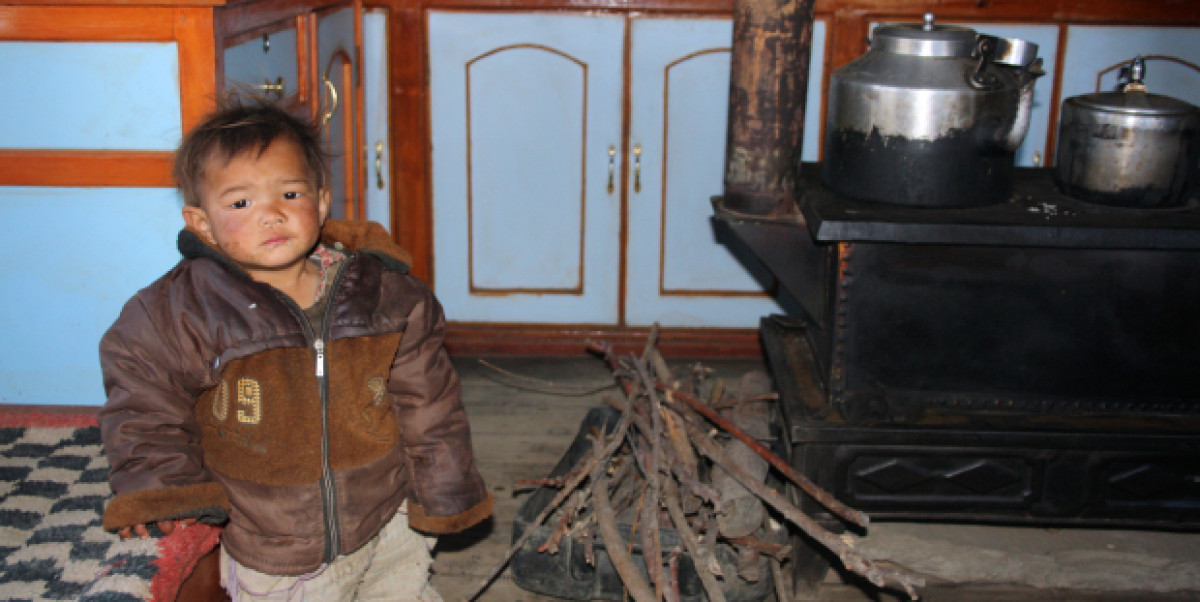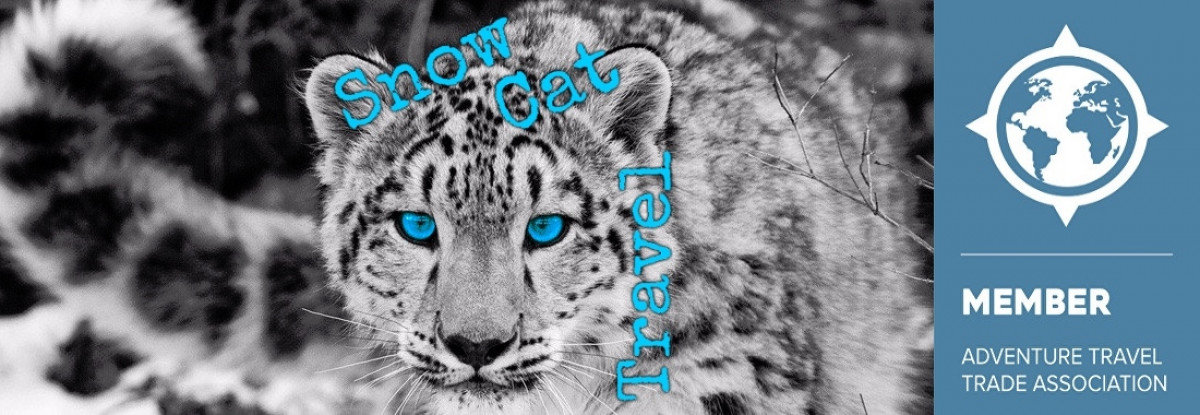Relishing my authentic Italian coffee and with the free Wi-Fi I check to see if Manchester United won earlier today (they did!).
It’s a bit of a surreal moment, as I’m sitting in a coffee house (complete with real Italian Espresso machine) at over 9,000 feet in the Himalayas looking right into the “Forbidden Kingdom of Mustang”.

In stark contrast to “my world” of Italian coffee and Wi-Fi, across the cobbled street a couple of elderly local women with weathered faces and wearing traditional Tibetan style clothing are gossiping, whilst drying apples naturally under the sun….just as it has always been done. The old and the new!
I’m in the Tibetan influenced village of Kagbeni, as far as you can go into Upper Mustang without a special and rather costly permit (which I have) and am heading for the fabled “city” of Lo Manthang.

It’s a journey I’ve made before around 20 years ago. Back then the journey was very different and it’s a fascination in itself to see how some things have changed and some things haven’t.
Way back when, my journey from Pokhara to Lo Manthang had to be on foot. And, what an arduous, tough journey that was. A trek up through the lower Kali Gandaki Valley to reach Kagbeni and then even more challenging trekking over a few 14,000+ foot passes in the high altitude, arid wilderness landscapes of Upper Mustang to reach Lo Manthang. Oh….and then back again of course too.
Back then it took a few weeks to make the return journey following the ancient trade route that saw caravans bringing salt from Tibet to India and with exotic spices going the other way…..now it takes just a few days.
The difference being a road (of sorts), one that still seems improbable. Well, to me anyway. But, there it is….a rough and ready dirt road right between the massive peaks of Annapurna and Dhaulagiri and then reaching ever higher and deeper into the wild and hostile landscape of Upper Mustang.

Mustang (formerly the Kingdom of Lo) was famously “off limits” until 1992. Lying “behind” the Himalayas on the high Tibetan Plateau, it remained culturally intact and is very different to the rest of Nepal.
For the “handful” of foreign tourists who venture into Upper Mustang only the purist might rue the coming of the “road”. If you really want, you can still trek to Lo Manthang and by and large avoid the road. Still, the majority of locals I spoke to on my journey were positive about “the road”. Most felt being better connected to the world has greater benefits.
Sure I’m going by road this time (my legs say “no” to hard trekking nowadays), but it’s one heck of a road trip and most certainly still ticks the “Himalayan adventure” box. Being bounced around in a jeep isn’t what I’d call a luxury.

The advent of the road may have brought some change, but what hasn’t changed is the spectacular landscapes, nor that sensation of being high, remote and wild. OK, so the monks in some of the isolated Tibetan Buddhist monasteries I visited along the way might have mobile phones and with Internet access we can be “friends” on Facebook (and why not?), but the prayers and rituals still seemed (and are) the same as the ones I witnessed all those years ago.
The “magic” of Mustang, it’s arid and barren scenery with weird, wind eroded rock formations and cliffs remains. The beauty too. The pigmented colourations of the landscape-ochre, brown, grey, red, yellow and dotted with tiny, traditional Tibetan style villages where the locals are still just about able to eek a life in this often inhospitable region.
The ‘jewel’ of Mustang, the fabled, walled ‘city’ of Lo Manthang. It still looks and feels ancient.

This is a road trip of countless memorable experiences.
So, let me share this journey from the sub-tropical lowlands, up through Himalayan giants and further into the Tibetan Plateau with you.
From colourful and chaotic Kathmandu I took the 25 minute flight to Pokhara-Nepal’s premier tourist destination. Actually, I was surprised how much Pokhara had grown.…more hotels, cafes and bars than ever seemed to be sprawling and jostling for space along the “Lakeside Strip”.
But, Pokhara still retains that laid back feel and it was good to reminisce and unwind by the lake with a lassi at “The Boomerang”, enjoy those superlative views of Fishtail and the Annapurna range in Pokhara’s balmy climate as soothing music wafted through me.

At the crack of dawn the following morning I jumped into my Land Cruiser, managed to grunt “Namaste” to my driver and guide as we headed out of Pokhara and “kissed goodbye” to tarmac as we entered the Kali Gandaki River Valley near the nondescript town of Beni.
“This is alright” I thought to myself as we steadily bounced along the dusty road, skirting the river banks. A bit dusty, but not as rough as I was expecting. Very pretty too with the vegetation reflecting the sub-tropical climate, banana trees, oranges and the like.
Soon we began to slowly and steeply climb, climb and climb and are greeted by the sight of mighty Dhaulagiri and the Nilgiri Himal. But, before I knew it the climbing (for today anyway) was almost over as the road became the now broad almost endless cobbles of the river bed.

Perched high above the valley was our overnight halt and some unashamed comfort at the Thasang Lodge. To be honest, I didn’t need to “rough it” any night on this road trip adventure. What had been some pretty dire overnight halts when I’d trekked this route had taken advantage of the road and upped their game.
Using “luxury” would be a bit OTT, but having a proper bed and private shower and W.C. every night was a welcome bonus this time around.
What wouldn’t be OTT would be describing the views from the lodge at Thasang as being anything other than sensational, whichever direction I cared to look. The towering peak of Dhaulagiri and its spectacular icefall and across the valley to the Nilgiri’s and Annapurna.

What had taken four days walking for this amazing scenery was now just 6 hours. Fantastic!
Awake bright and early to catch the first shafts of sunlight illuminating the summit of Dhaulagiri and a relatively short driving day ahead. Firstly to the village of Marpha, an immaculately cleanvillage and where the first signs of a Tibetan influence become apparent. Apple orchards too, so a good excuse to try some delicious apple pie.
As well as being where Hindu Nepal starts to become more Tibetan Buddhist, it’s around here that you also notice that the previously densely wooded and forested mountainsides start to thin out before disappearing completely.

That’s the thing with a “vertical” road trip..…you go up through climactic zones rather quickly. Yesterday I’d started in a semi-jungle zone and ended up in an alpine forest.
Now it was about to change to a high altitude desert as we approached Jomsom, just a short distance from Marpha. It’s here that the monsoon rains reach no further, hence Upper Mustang is arid from this point.

But, it’s pretty mind-blowing to be able to see it visibly and so abruptly. It’s almost like 10 metres down in one direction you can get rain and vegetation, 10 metres up……no rain and just desert.
And into that desert we go. A short and mostly level drive to Kagbeni and that real Italian coffee I started with! I’m amused to find that a local entrepreneur has opened a “Himalayan McDonalds” in Kagbeni….YakDonalds!
Anyway, here I am on the edge of the “forbidden zone” and as we leave Kagbeni the following morning, the sign at the police check post proclaims that “entry is illegal beyond this point without a special permit”.
This special permit costs in excess of $US 500 and it’s a contentious matter as to where that money actually goes, still the police man who checks our permits is friendly and obliging and it is a pleasing sensation to be back in the Kingdom of Lo once again.

We head for the village of Charang and the road surface is pretty good…gravelly, but all in all not too bad to travel on. But, we’ve got to cross the river and there’s no bridge. Thankfully the river level isn’t too high and we’re able to cross with relative ease in the Land Cruiser…..a bit like an Upper Mustang Drive Thru car wash!

As we’re making good progress and as we could all do with a bit of a leg stretcher, we take a slight detour and then a hike of around 45 minutes to take a look at the sky caves at Chungsi.
There are maybe around 10,000 sky caves in Mustang and as you might guess from their name, are not easily accessible. They date back around 2,000 years and some were used for burials, but also as safe places to live during troubled times. These ones at Chungsi don’t require climbing skills and ropes to access them (I wonder how the locals managed?), just a head for heights on the rough, stone steps.

Reaching Charang (Tsarang) at 11,600 feet it’s now time for an essential acclimatisation day. Even though I’m not trekking, there are still some high passes to drive over before reaching Lo Manthang and Charang is far too nice a place to hurry on from.
Charang is very typical Mustang. Just 100 or so traditional style homes with stone walls and flat timber roofs, painted in ochre, red and white and that blend so sympathetically with the surrounding landscape.
There are numerous colourful chortens scattered across the village and it’s dominated by a massive, crumbling five-story dzong, a Tibetan-styled fortified palace.

The following morning I paid a visit to Charang gompa, a monastery of the Sakya sect built in 1395. It hosts the biggest library in the Kingdom of Lo and is adorned with 15th century frescoson the walls.
Wandering around the village with my guide we “discovered” that two families were butchering a Yak and were invited to observe. Fortunately I’m not squeamish. Life here is hard, so nothing is wasted….”nose to tail” is the order of the day. Nothing is wasted.

When we arrived the Yak had already been slaughtered….a female Yak evidently as I noticed a foetus put to one side. The choice cuts had already been made and stacked into two piles. It turns out that the Yak belonged to one family, so they get one pile and the other family helping get the other pile. Both families were now busy making “sausages” from the entrails. The Yak’s head was in a bucket...I have no idea what that would become!

My newly found friends finish their tasks and kindly invite us into their home for some Yak butter tea. It’s fair to say that this is an acquired taste (a bit rancid), but I feel privileged to be invited into their simple abode (I was curious anyway) and my poorly disguised attempt at pretending to enjoy the Yak butter tea is thankfully met with much laughter from my hosts.

The final drive to Lo Manthang itself is relatively short and as we reach the top of a 13,000 foot pass I’m greeted with extensive views as far as Tibet and there, far below lies the “walled city”of Lo Manthang.
City is of course stretching it a bit…..it’s essentially a small village of less than 180 homes, but it is steeped in history as the “capital” of the former Kingdom of Lo. Mustang ceased to be a Kingdom when Nepal became a republic and the last “King of Mustang” died in 2016.

Walking around Lo Manthang, it all seems so very familiar to me and I’m pleased to see that the 15th Century Royal Palace (now former) is still standing having withstood the devastating earthquake that rocked Nepal in 2015. Sure, there are now a couple of rather decent guest houses (hurrah!), but that mystical feeling still remains. Not least as the four Gompa’s; Jampa Lhakhang, Thubchen, Chodey and Choprang are still here.

Wandering through the maze of narrow stone flagged alleyways with whitewashed mud and stone walled homes I come across women spinning their prayer wheels and making braids in each others’ long hair. In a more open area some of the locals are collecting water from the fountain, others trying to wash and preserve their modesty at the same time. An elderly lady sits outside her home combing wool, whilst another is collecting goat dung with a brush, to use as fuel for her stove at home. Not much has changed.

Later in the evening I follow the locals as they walk around the city walls (clockwise of course), prayer wheels spinning and mantra’s being chanted.
The following day I head out of the city on foot to wander around the painstakingly, back breakingly ploughed fields. Not much grows up here. Winters are bitterly cold and neither is there much water in this dry, harsh climate other than what can be irrigated. A major feat in itself up here.

Barley and buck wheat look to be the main crops, so not surprisingly buckwheat pancakes were part of tonight’s dinner and with some very welcome buckwheat brandy as my much needed“Mustang central heating” I slept like a tiger, even if it was chilly.
Sadly it was time to turn around and although it is theoretically possible to drive all the way back to Jomsom in one very long, gruelling day I chose to break the journey into two and travelled only as far as Chusang, which gave me time to walk to the very picturesque, ancient village of Tetang.

Now, there’s one bonus of having to return from “whence I came”. It may well be the same route, but no longer are the Himalayas behind me, they are in front and what a sight they are as the snowcapped giants form my far horizon as a seemingly impenetrable huge wall of rock and ice.

And, rather than bother with the bumpy, arduous two day drive back down the lower Kali Gandaki Vally to Pokhara, at Jomsom I hopped onto the 18 minute early morning flight and although sad to no longer be in Mustang, it was actually rather nice to feel warmth once again.
You really do have to admire and respect those that call Upper Mustang “home” and endure all the hardships that this still remote, isolated, barren mountain wilderness brings.

General stuff about Upper Mustang
Climate and other considerations: Being a high altitude desert it can and does get bitterly cold, especially during the winter months when the region is blighted by cold, strong winds emanating from Central Asia. Don’t under estimate the strength of the sun’s rays up here, even if it’s cold at these altitudes the sun rays are very strong, so use a high strength sun blocker.
When to Go: Unlike the rest of Nepal as Upper Mustang lies beyond the monsoon rain shadow, this is a part of Nepal that arguably is best to visit during the summer/monsoon months, as it isn’t as cold as winter. That said the journey up to/from Jomsom can sometimes be tricky during the monsoon.
Mustang Permit/entry requirements: A special permit to enter the restricted area of Mustang beyond Kagbeni costs in excess of $US 500 per person for ten days, only obtainable via registered operator. You must also be accompanied by a licensed guide. So, you really need to use the services of a specialist Nepal operator like Snow Cat Travel. The permit is for aminimum of two persons travelling together. If you’re travelling solo you will have to pay for two Mustang permits and a little extra to “facilitate” the permit process.
Notes: The author of the article (who wishes to remain anonymous) travelled to Lo Manthang on a custom made Mustang Jeep Tour to Lo Manthang with Snow Cat Travel.
Originally published on the Snow Cat Travel WordPress Blog




